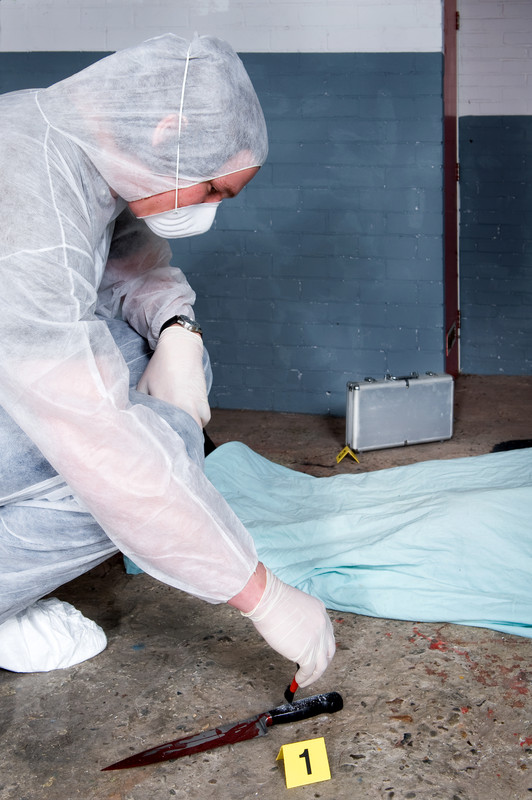Is Fingerprints Evidence Reliable?
The reliability of fingerprint identification evidence has routinely went unquestioned at all levels of courts and when fingerprint experts opined that the fingerprints at the scene of crime, say, a murder weapon matches that of the accused person, it commonly be understood that the fingerprints found to be evidence of guilt against the accused person. This is because not two persons, not even twins have identical fingerprints. Lawyers in such a situation normally panic and seldom got the confidence to question the accuracy rate of the examiner in analyzing the fingerprints in question nor question the average accuracy rate of the examiners’ profession. Is there a possibility that the fingerprints analyzed been wrong? Seldom lawyers ponder this question without realizing that the accuracy of the examiner’s analysis could be wrong or there could be misidentification of the fingerprints.

The problem the lawyer normally faced is that there is unwillingness among the forensic community to admit or acknowledge the possibility of errors in their forensic work. It has always been assumed by the courts that fingerprint identification evidence is assumed to be scientifically valid and free from errors and evidence of fingerprint examiners normally been accepted by the courts without any hesitation at all. In offences against illicit drugs, investigators had always been in the look out for fingerprints in drugs handled by suspects and once found it formed very strong corroborative proof that the suspect was in physical contact of the illicit drugs.
Don’t Panic!
An experience and skillful lawyer may cross-examine the expert’s training, qualifications, and standards for identification. Through cross-examination, the lawyer could be able to find out that there may not be any mandatory qualifications to become a fingerprint examiner and further, there appears to be no uniformity among examiners regarding the training they have received, the organization through which they are certified, or the minimum level of education required. Although most examiners are certified at least by their own local police agency, there are no uniform standards required for these certifications in this region.
Shocking is that fingerprint identification is based upon the subjective decision of the fingerprint expert himself, thus, not a real science! Normally when considering scientific analysis, one automatically assumes that the  tests conducted are based on objective standards, but it is not. One may have presumed that fingerprint analysis is conducted by a computer or by some other sophisticated machine. For this reason, one may conclude these are scientific tests, conducted in accordance with objective standards. One may just think that these sophisticated machines are of foolproof automated computer system, thus, will conclude that specific the qualifications of the individual actually examining the evidence is of little consequence. These are all common assumptions laypeople have about fingerprint identification evidence. These assumptions act to solidify the heightened reliability associated with fingerprint identification evidence. These assumptions follow the conventional myth that fingerprint examinations are objective and scientific, and that is why “fingerprints don’t lie.” The reality of the process is quite different.
tests conducted are based on objective standards, but it is not. One may have presumed that fingerprint analysis is conducted by a computer or by some other sophisticated machine. For this reason, one may conclude these are scientific tests, conducted in accordance with objective standards. One may just think that these sophisticated machines are of foolproof automated computer system, thus, will conclude that specific the qualifications of the individual actually examining the evidence is of little consequence. These are all common assumptions laypeople have about fingerprint identification evidence. These assumptions act to solidify the heightened reliability associated with fingerprint identification evidence. These assumptions follow the conventional myth that fingerprint examinations are objective and scientific, and that is why “fingerprints don’t lie.” The reality of the process is quite different.
An experience and skillful lawyer while will not dispute the physiology of the fingerprints or challenge the comparison methods conducted by examiners on full sets of known fingerprints would instead challenge the possibility that examiners could not accurately and conclusively determine that the identity of an incriminating latent print found at the scene of crime was that of the accused person. The lawyer will normally seek to assert that the latent fingerprint experts are not qualified to give conclusive opinions regarding the identity of the maker of the latent prints. Once the latent fingerprint evidence could be excluded as admissible evidence, it would then have a devastating effect on the prosecution’s case whose evidence must reach the heightened standard of proof beyond a reasonable doubt. The experience lawyer may also argue or convince the court and adduce evidence that there is a significant difference between known prints and latent prints taken at scene of crime whose conditions varies from clean to smudged, to bloody to even overlapping on top of the other. Thus the accuracy of latent print identification is where the real evidentiary challenge lies.
 How to Lift Fingerprints at Scene of Crime?
How to Lift Fingerprints at Scene of Crime?
A special powder or chemical and a brush are used to help detect latent fingerprints by crime scene investigators. A transparent tape will be used once detected to lift the latent fingerprints by the crime scene investigators from its original surface onto a “lift card”. The lift cards are then sent for examination by fingerprint identification experts who then will compare the friction ridge detail in the latent print to the details in the known print. The latent fingerprint proves who you are and where you are and because of these, latent prints became very powerful tool to gain convictions against an accused person. Historically, it had been impossible to rebut because there was no possibility at all for accused person to disprove conclusively the finding of expert fingerprint examiners.
A careful analysis will always show that the latent prints lifted at crime scene normally are poor and this therefore can give rise to controversies in the analysis of these latent fingerprints. The skillful lawyer should in cross-examination throw some doubts at the accuracy of the fingerprint analysis by the fingerprint examiner because unlike rolled fingerprints, latent fingerprints normally were incomplete and most often were distorted. The size of the latent print and rolled print could also not be the same because rolled prints were made under controlled circumstances. Distortion of the fingerprints normally was caused to the manner in which the finger came into contact with the surface, the nature of the surface on which the print was left and also the property of the material and or medium that were used to lift the latent print.
Evidentiary Standards and Use of Expert Opinion Testimony of Fingerprint Examiners During Trial
The court needs to scrutinize all expert witnesses and all scientific and technical theories they put forward before the court. The court need to determine whether they are “junk science” or otherwise are unreliable evidence that can taint the finding of the court. In respect of this, the task of the court is to investigate the validity of the science upon the expert seeks to base his or her opinions. Fingerprint identification therefore is an fine example where the law meets science and in criminal law context and due process of rule of rules of evidence, there requires a certain level of scientific validity before a fingerprint examiner’s expert opinion and conclusion could properly be admissible.
If an expert testify not within his field of expertise, his opinion will be useless. Fingerprint identification is very technical and complicated forensic evidence and it is very important that the expert could be able to explain to the court the meaning of the expert’s analysis in which the expert must support his opinion from reliable factual data. The significance of the expert testimony is of the expert’s opinion as to whether the latent fingerprint found at the scene of crime matched that of the accused person’s known fingerprint. From the viewpoint of testing the reliability of opinion testimony, it is therefore, critical to ask how scientifically valid is the factual basis that leads the fingerprint examiner to conclude that there is a “match”? Without underlying scientific validity, the ultimate opinion lacks legal reliability and the lawyer must ague that it ought to be excluded by the court.
To have the evidence of latent fingerprints admitted it must be proved that there is unquestioned reliability placed upon fingerprint evidence. Further the court must also be asked to examine the forensic methodology used or its validity to test the evidence and the rate of error associated with the testing methods. The reliability of latent fingerprint evidence can be questioned as they can always fail for lack of scientific validity.
 Fingerprint analysis was developed not as a science and therefore, its conclusions have not been scientifically analyzed for validity. Instead, fingerprint identification was developed as a law enforcement tool to keep track of the identities of criminals. It has never been subjected to rigorous testing.
Fingerprint analysis was developed not as a science and therefore, its conclusions have not been scientifically analyzed for validity. Instead, fingerprint identification was developed as a law enforcement tool to keep track of the identities of criminals. It has never been subjected to rigorous testing.
Conclusion
Don’t give up! The fact that fingerprints are found at scene of crime or on the illicit drugs does not mean that the expert examiner could conclude that the fingerprints found on them are yours. Just because it happened that you were at the scene of the crime where latent fingerprints lifted suspected to be yours when crime scene investigators arrived does not mean that you could be convicted and be responsible for the crime. Sometimes the expert makes mistakes and could have misidentified the latent fingerprints as yours but in actual fact the latent fingerprints were not yours or not been identifiable at all. Get an experience and skillful lawyer to help you when you are in trouble and not simply hire a lawyer!

